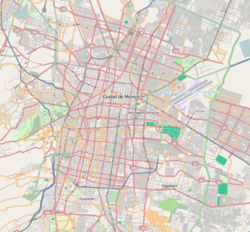| STC rapid transit | |||||||||||
 | |||||||||||
| General information | |||||||||||
| Coordinates | 19°23′55″N99°06′49″W / 19.398521°N 99.113545°W | ||||||||||
| Operated by | Sistema de Transporte Colectivo (STC) | ||||||||||
| Line(s) | | ||||||||||
| Platforms | 1 island platform | ||||||||||
| Tracks | 2 | ||||||||||
| Connections | | ||||||||||
| Construction | |||||||||||
| Structure type | At grade | ||||||||||
| Other information | |||||||||||
| Status | In service | ||||||||||
| History | |||||||||||
| Opened | 20 July 1994 | ||||||||||
| Passengers | |||||||||||
| 2023 | 8,025,183 [1] | ||||||||||
| Rank | 42/195 [1] | ||||||||||
| Services | |||||||||||
| |||||||||||
| |||||||||||
Coyuya is a station on the Mexico City Metro. [2] [3]

